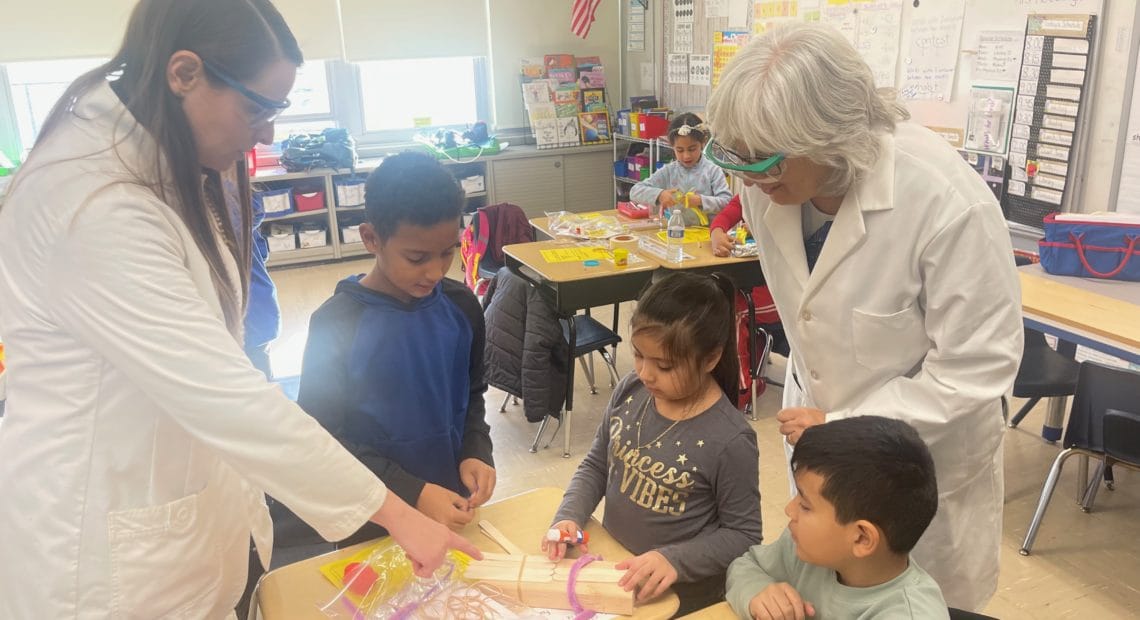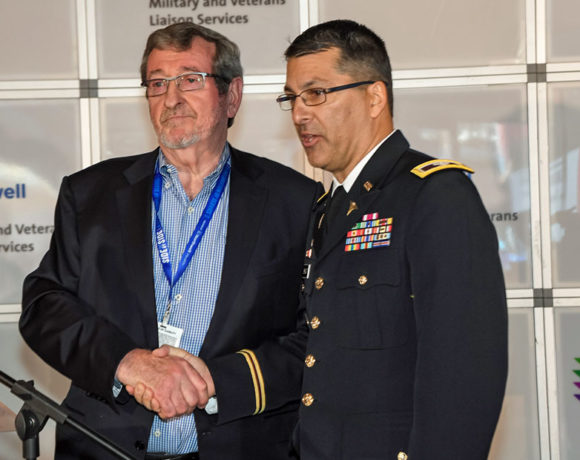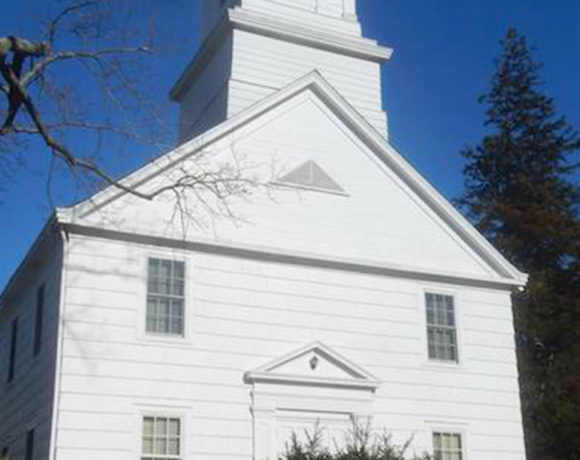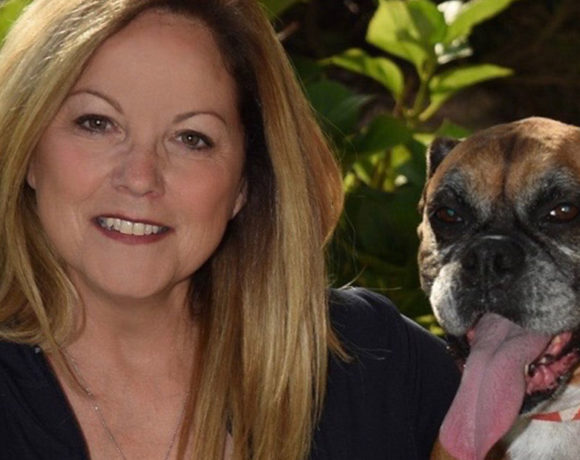Photos courtesy of the Northport-East Northport Union Free School District.
Students found a connection between footwear and physics during a new and exciting Next Generation Science Standards lesson developed by Northport High School physics teacher, Mrs. Karyn Libretto. This new lesson is the first that Mrs. Libretto, along with fellow high school physics teacher Dr. Gillian Winters, are piloting for publication in a science journal.
This particular lesson was designed to encourage students to understand how the properties of matter affect how an object functions. Second graders at Pulaski Road School were tasked to design a “shoe” for gripping uphill or for sliding downhill. Each group was challenged to first design their shoe in a detailed diagram, collaborate to engineer a shoe and ultimately test the effectiveness of their shoe on a ramp with variable steepness.
Mrs. Libretto and Dr. Gillian Winters are two high school physics teachers who are both current and emeritus teachers in the New York State Master Teacher Program. They have collaborated through NYSMTP over the years to develop science lessons aligned with the Next Generation Science Standards for every elementary grade. Lessons aligned with NGSS provide students with in-depth understanding of content and encourages student to develop key skills such as communication, collaboration, inquiry, problem solving, and flexibility.
The purpose of publishing this lesson is to encourage teachers across the United States to provide their students with engaging lessons that stimulate students’ interests in science and prepare them for higher education, careers, and citizenship.
Mrs. Libretto said “The students in Mrs. McGunnigle’s class were enthusiastic participants who demonstrated tremendous creativity! We look forward to sharing more of our science lessons in the future.”
Throughout the entire Northport-East Northport district, elementary science curriculum has been aligned to the three-dimensional practices and cross cutting concepts of NGSS, providing students with STEM challenges to engage and explore relevant scientific phenomena and solve engineering design problems. Teachers and elementary coordinators continue to refine their instruction to incorporate more opportunities for process-oriented inquiry and lab investigation in a hands-on and minds-on approach to science education.








Recent Comments